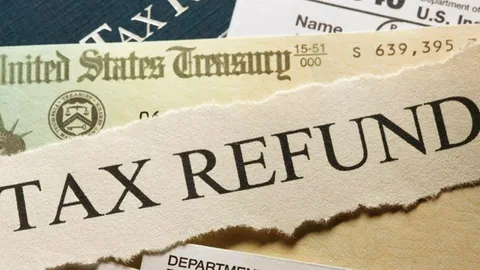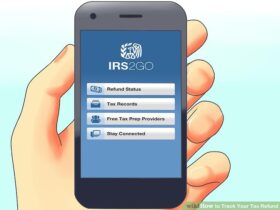Did you know that the IRS holds onto millions of dollars in unclaimed tax refunds each year? If you’re like many Americans, you may have unknowingly overpaid your taxes or missed filing a tax return. This money could be waiting for you, and reclaiming it is often simpler than you might think. In this guide, we’ll walk you through the steps to check if you have an unclaimed tax refund and how to get it back.
Why Do Tax Refunds Go Unclaimed?
Before diving into the steps to check for an unclaimed refund, it’s important to understand why tax refunds go unclaimed in the first place. Here are some of the most common reasons:
- Failure to File a Tax Return: Many people, particularly those with lower incomes, may not file a tax return because they don’t think they are required to do so. However, even if you don’t owe any taxes, you might still be eligible for a refund.
- Incorrect or Outdated Address: If you moved and didn’t update your address with the IRS, your refund check might have been sent to an old address and returned to the IRS.
- Overlooked Tax Credits: Some taxpayers may miss out on claiming refundable tax credits such as the Earned Income Tax Credit (EITC), which could lead to a sizable refund.
- Amended Returns: If you filed an amended return that resulted in a refund, you might have missed the notification or the check.
Step-by-Step Guide to Checking for an Unclaimed Tax Refund
If any of the reasons above sound familiar, it might be worth your while to check for an unclaimed tax refund. Here’s a detailed guide to help you through the process:
Step 1: Gather Necessary Information
Before you start checking for a refund, make sure you have the following information handy:
- Social Security Number (SSN) or Individual Taxpayer Identification Number (ITIN): This is required to verify your identity with the IRS.
- Filing Status: You’ll need to know whether you filed as single, married filing jointly, married filing separately, head of household, or qualifying widow(er).
- Exact Refund Amount: Knowing the exact amount of the expected refund can help streamline the process. You can find this amount on the tax return you filed.
Step 2: Visit the IRS Website
The IRS provides a handy tool called “Where’s My Refund?” that allows you to check the status of your refund. Here’s how to use it:
- Go to the IRS Website: Visit the official IRS website at www.irs.gov.
- Navigate to “Where’s My Refund?”: On the homepage, look for the “Refunds” tab and click “Where’s My Refund?” This will direct you to the online tool.
- Enter Your Information: You’ll be prompted to enter your SSN or ITIN, your filing status, and the exact refund amount. Ensure all the information you enter is accurate to avoid delays or errors.
Step 3: Use the IRS2Go Mobile App
If you prefer using a mobile device, the IRS also has a mobile app called IRS2Go that provides the same functionality as the “Where’s My Refund?” tool on their website.
- Download the App: The IRS2Go app is free on both Apple and Android devices.
- Access the Refund Status: Open the app and navigate to the “Refund Status” section.
- Input Your Information: Just like the website, you’ll need to provide your SSN or ITIN, filing status, and refund amount.
Step 4: Contact the IRS Directly
If you cannot use the online tool or the mobile app, or if you need more information, you can contact the IRS directly:
- Call the IRS Refund Hotline: The IRS has a dedicated toll-free number for refund inquiries. Call 1-800-829-1040.
- Prepare for Long Wait Times: Be prepared for long hold times, especially during peak tax season. Make sure you have all your information ready to provide to the IRS agent.
Step 5: Check for Prior Year Refunds
If you did not file a return for a prior year and believe you might be owed a refund, the IRS allows you to claim a refund for up to three previous tax years. Here’s how to check for prior year refunds:
- Determine the Tax Year: Identify the specific tax year(s) you need to check. You can file an original or amended return for any of the last three years to claim a refund.
- File a Prior Year Tax Return: If you find that you need to file a return for a previous year, you can download the forms from the IRS website and submit them. Keep in mind the three-year statute of limitations for claiming a refund.
Step 6: Update Your Address with the IRS
If you think the IRS might have sent your refund check to an old address, you’ll need to update your address to ensure you receive it:
- File Form 8822: Download and complete Form 8822, Change of Address, from the IRS website.
- Mail the Form to the Appropriate IRS Office: The form provides instructions on where to mail it. Make sure to use the correct address for your region to avoid delays.
Tips for Avoiding Unclaimed Refunds in the Future
To prevent leaving money on the table in the future, follow these best practices:
- File Your Taxes Every Year: Even if you’re not required to file, doing so can help you claim any refunds due to you.
- Keep Your Information Updated: Always notify the IRS of any changes to your address or banking information.
- Double-Check Your Tax Credits: Make sure you’re claiming all the credits and deductions you’re eligible for, particularly refundable ones like the EITC.
- Use a Reputable Tax Preparer or Software: If you’re unsure about the process, consider using a reputable tax preparer or tax preparation software that can guide you through the filing process and help you claim any eligible refunds.






Leave a Reply